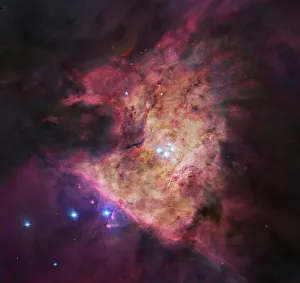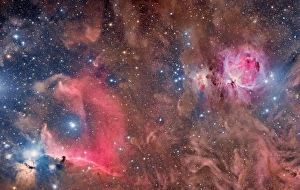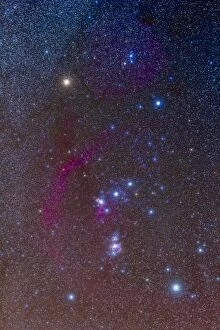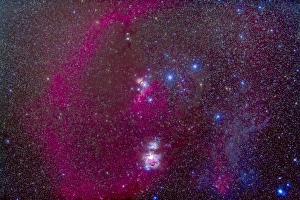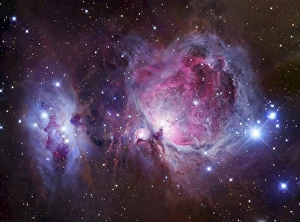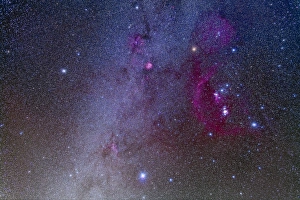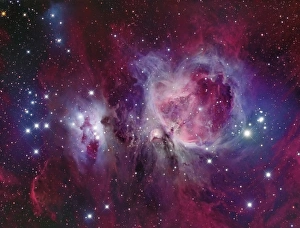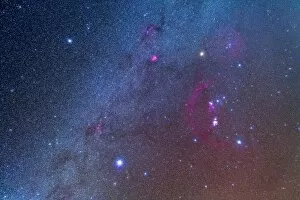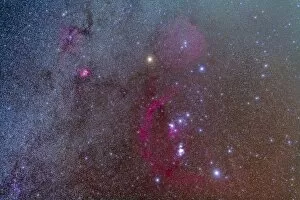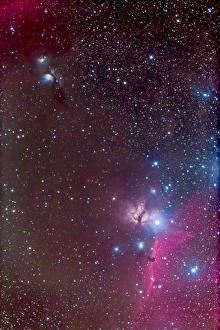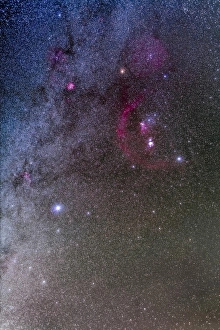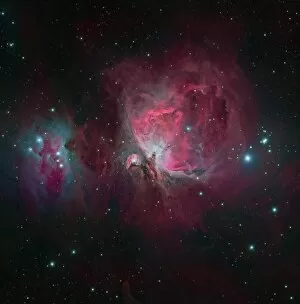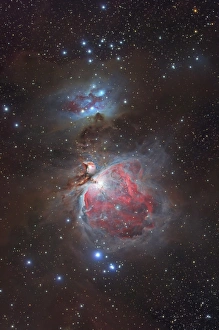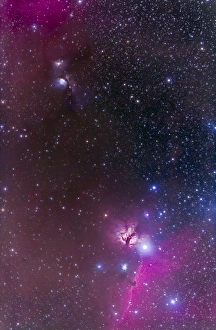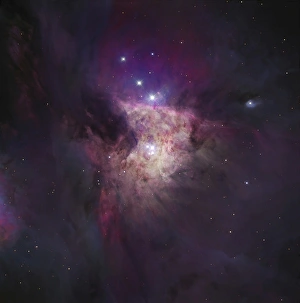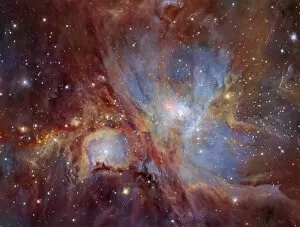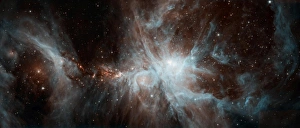Messier 42 Collection
Messier 42, also known as the Orion Nebula, is a breathtaking celestial wonder that captivates astronomers and stargazers alike
All Professionally Made to Order for Quick Shipping
Messier 42, also known as the Orion Nebula, is a breathtaking celestial wonder that captivates astronomers and stargazers alike. Located in the center of the Orion constellation, this nebula holds an extraordinary beauty that has been captured by NASA. At its heart lies the Trapezium Cluster, a group of young stars illuminating the surrounding gas and dust clouds. This cluster serves as a stellar nursery, where new stars are born amidst swirling cosmic chaos. The widefield view of the Orion Nebula and Horsehead Nebula reveals their intricate dance within this vast expanse. The images provided by NASA showcase the sheer magnificence of Messier 42. Its vibrant colors and ethereal glow paint a mesmerizing portrait against the dark canvas of space. From afar, it appears like a distant brushstroke on nature's grand masterpiece. Intriguingly enough, NGC 1977 - a reflection nebula - accompanies M42 in its celestial journey. Together they form an awe-inspiring sight that leaves observers spellbound. One cannot help but be drawn to NGC 1973, aptly named The Running Man Nebula due to its resemblance to a sprinting figure amidst interstellar clouds. It adds another layer of intrigue to this already captivating region. As we marvel at these stunning images from NASA's lens, we are reminded once again of our place in this vast universe. Messier 42 stands as both an artistic creation and scientific marvel—a testament to the wonders waiting beyond our Earthly confines for those who dare explore them further.


